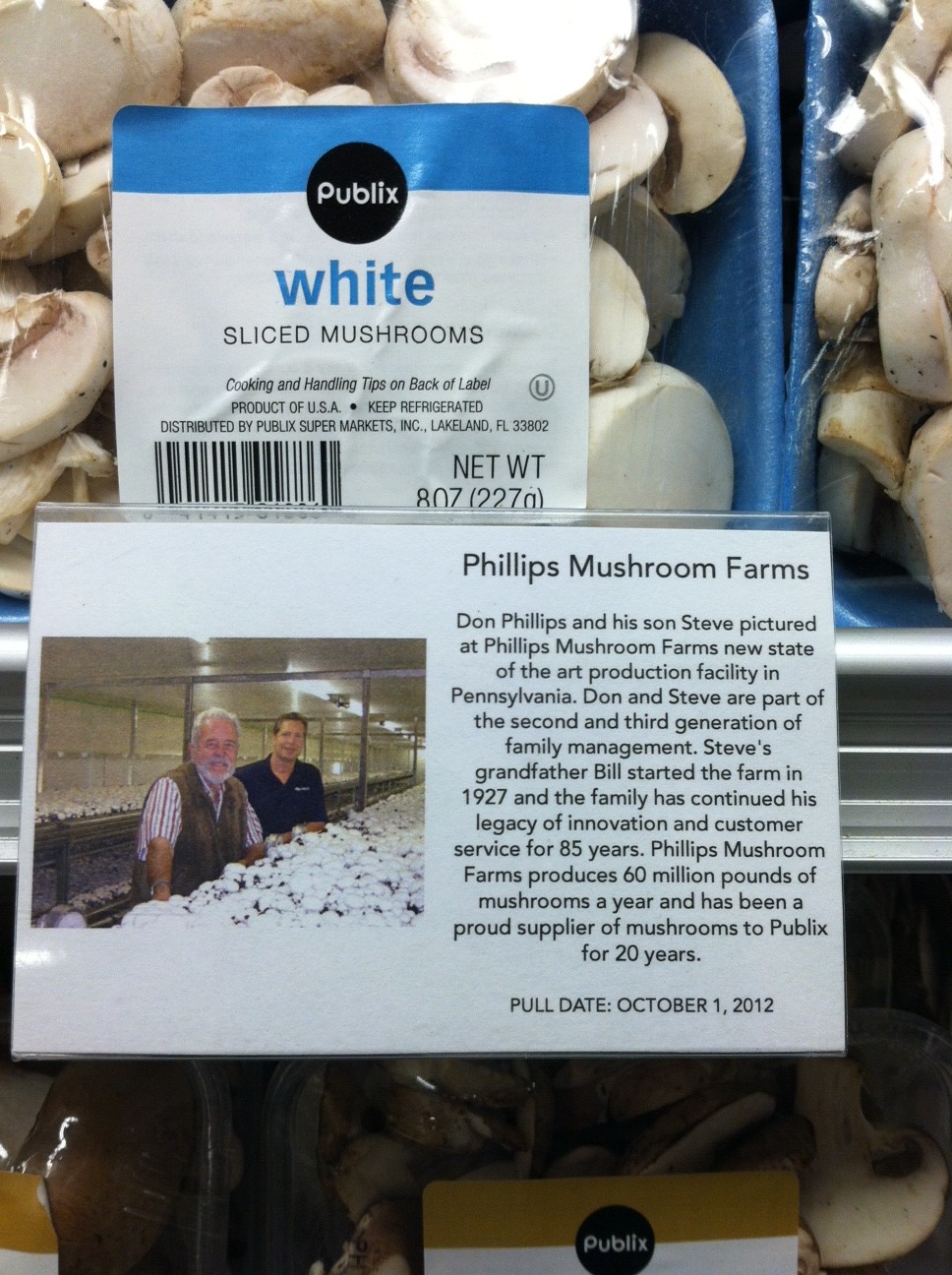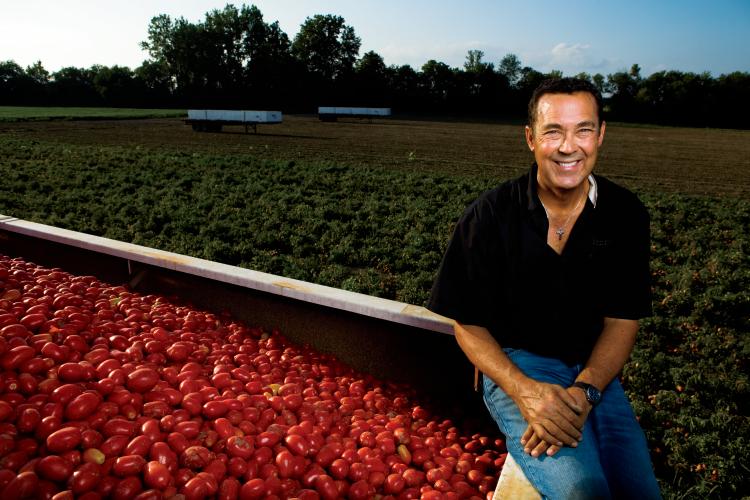Home > Lifestyle > Food For Thought > Publix Grocery Shelves Invite Consumers to Know Their Farmers
Publix Grocery Shelves Invite Consumers to Know Their Farmers
Yesterday, while shopping in my friendly neighborhood Publix, I noticed something unique. Just below the Publix brand mushrooms I had been eyeing was a photo and story about the mushroom farmers.

I’m in the business of connecting farmers to consumers, and vice versa, so I’m happy to see Publix doing their part. I know many people don’t associate the grocery store brand with being grown by a farmer. It’s prepackaged in plastic wrap, or it comes in a can or freezer bag, and it doesn’t have a fancy brand name, so it’s probably from a giant corporate farm, right?
Nope. Did you know that 98% of all U.S. farms are family owned? Just because a farm is large in size – and may employ some workers who aren’t family members – doesn’t mean it’s owned by a faceless corporation. Many of the sizable farms have to support several families – a husband-and-wife team, their children, their spouses and their kids – and sometimes their siblings, nieces and nephews, too. A family farm can easily span three generations, or even four. That’s a lot of mouths to feed, but when everyone is out in the field doing their jobs, it’s a farm that’s able to feed not only that family but also grocery shoppers around the country.
Take the Publix example. The farm grows some 60 million pounds of mushrooms each year, but it’s stayed in the Phillips family for three generations. Sure, they’ve expanded into a new, modern facility, but like many other successful businesses, both large and small, farms need to upgrade their technology to remain productive and meet consumer demands – sort of like how newspapers and magazines have had to evolve from print to online in order to survive.

Some farms also hire contract growers – other farmers outside the family – to help them keep up with demand for their product. We’ve written about the family-owned Red Gold Tomatoes for which we interviewed one of the Indiana farmers who grows tomatoes for their company. (Read: Red Gold Grows Tomatoes and Jobs)
Now, I like a fresh, homegrown tomato as much as the next girl, and I am impatiently counting the days until my tiny green tomatoes finally turn red. But come January, I’m hard-pressed to find a tomato worthy of consumption. And while I’m fortunate enough to have access to home-canned tomatoes, sometimes I have to stop by my local grocery store for a can of tomatoes to dump in a pot of chili or a batch of vegetable soup. In this instance, I don’t want to cook with hot house tomatoes shipped from another country – I’d much rather use canned tomatoes, which are grown specifically to sit in my pantry, flavorfully preserved until soup season.
Same goes with those mushrooms. I’ve enjoyed local shiitakes grown on logs at a nearby farm and harvested for sale at my neighborhood farmers market. I grew up taking springtime hikes to hunt for morel mushrooms – or as we called them, “dry land fish.” But if I’m hosting a party and want to try a recipe for stuffed mushroom caps, not only do I probably have a long list of groceries that I want to get all at one convenient location, but I’m also going to want uniform white button mushrooms – just like ones produced by the Phillips family. And while I’ve been buying these mushrooms for years without knowing their source, I appreciate that I now have a face and name of the farming family – large or small – to thank for helping me feed my own family and friends.




